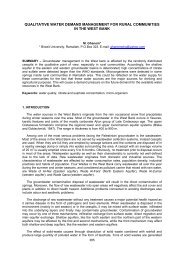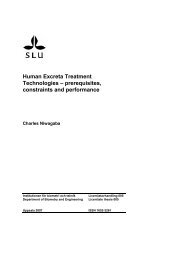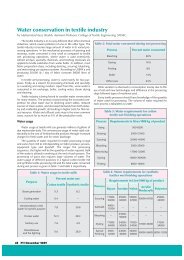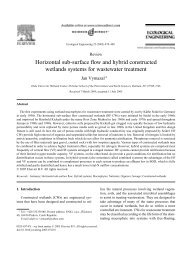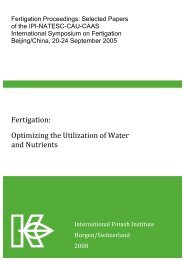The Incinerator Guidebook: A Practical Guide for Selecting ... - SSWM
The Incinerator Guidebook: A Practical Guide for Selecting ... - SSWM
The Incinerator Guidebook: A Practical Guide for Selecting ... - SSWM
Create successful ePaper yourself
Turn your PDF publications into a flip-book with our unique Google optimized e-Paper software.
Whether fuel-assisted or auto-combustion, the choice of incinerator technology should be in<br />
accordance with technical requirements of each country. Key specifications <strong>for</strong> any small-scale<br />
incinerator model should be based upon the following:<br />
1. Product in<strong>for</strong>mation<br />
Architecture<br />
Basic architectural requirements should include:<br />
� A minimum of two burning chambers: one to combust solids and one to combust gases.<br />
� A temperature or visual indicator to display heat status of equipment.<br />
� A durable refractory wall or liner capable of withstanding heat generated by waste loads<br />
of 100% plastic.<br />
� A stack with a minimum height of 4 meters.<br />
<strong>The</strong> architecture of the site should also include a secure enclosure <strong>for</strong> the incinerator, an ash and<br />
needle pit, arrangement <strong>for</strong> destruction of vials and glass syringes, a washing facility <strong>for</strong> reusable<br />
items, and a secure storage facility <strong>for</strong> waste. If a maternity ward is located onsite, a placenta pit<br />
may also need to be provided, if appropriate.<br />
Per<strong>for</strong>mance<br />
Any incinerator selected should:<br />
� Operate in the range of 600°–900°C when destroying medical waste.<br />
� Emit clear or near-to-clear (non-visible) emissions from the stack when destroying<br />
medical waste that has been properly segregated and loaded.<br />
� Reduce the weight of waste by 95% or more once destroyed.<br />
Durability<br />
Any selected incinerator should:<br />
� Be capable of destroying medical waste where the plastic waste content is greater than<br />
50% by weight of the total load.<br />
� Be constructed of corrosion-resistant materials (all components stainless steel or cast<br />
iron).<br />
� Be simple in design and operation, with minimal electronic components.<br />
� Have a lifespan of at least 5 years if auto-combustion type or 10 years if fuel-assisted<br />
(when used under normal conditions).<br />
Health centers must have access to the required technical capacity to install, maintain, repair, and<br />
operate the system. Systems installed in remote areas should be robust and reliable. Operating costs<br />
of systems should be considered when budgeting <strong>for</strong> procurement. If budget is not available,<br />
systems will not be operated and waste will not be destroyed properly. Systems should be easy to<br />
start, operate, and clean, and ash should be readily disposed of (including glass vials if mistakenly<br />
loaded).<br />
Manufacturer<br />
<strong>The</strong> profile and reputation of the manufacturer or supplier is critical. <strong>The</strong> manufacturer must<br />
support their product so that reliable and good-quality service or support can be assured in the event<br />
of system defect or failure. Specifications should ensure that:<br />
� Warranties and guarantees are provided <strong>for</strong> the expected life of the system.<br />
� <strong>The</strong> terms and conditions <strong>for</strong> technical support are clearly defined.<br />
� Training in installation, operation, and routine service is provided as an integral part of<br />
the supply agreement.<br />
� Maintenance and repair support is provided <strong>for</strong> a predetermined amount of time.<br />
11





